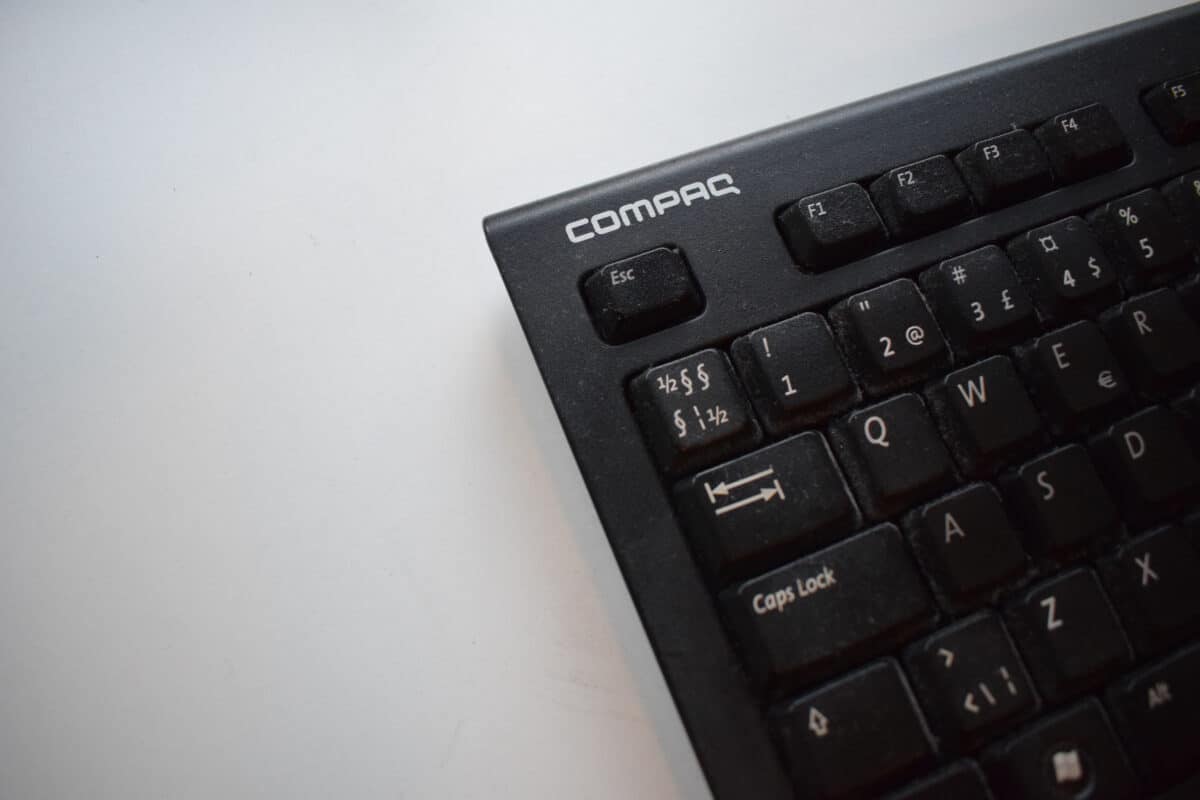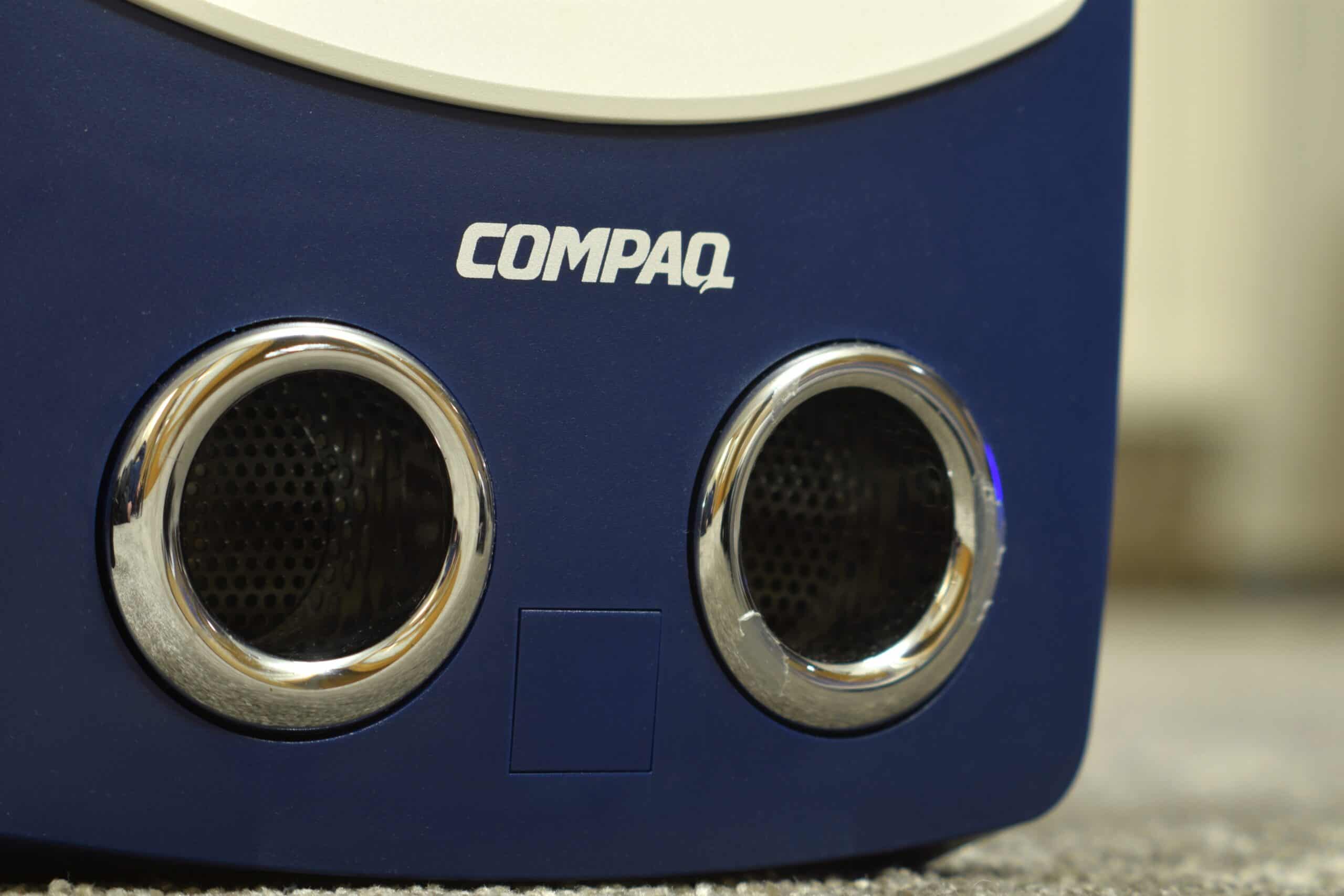When you think of the personal computer names that dominate the landscape today, you’re almost assuredly thinking of Microsoft, HP, Apple, and Dell. If we had asked this question two decades ago, that list would look a little different, and Compaq may have very well been your first top response.
Today, Compaq is an industry name long forgotten, but when it was founded in 1982, it would soon become the biggest name in personal computing. Looking back on Compaq and its failures is a reminder of where the computing industry has been and where we are today.
So why did Compaq fail so spectacularly? There isn’t one answer or one misstep, but a culmination of many decisions and a few mergers went wrong.
Read on to find out exactly what happened to this PC company.
Quick Facts
| Date Founded | February 16, 1982 |
| Founders | Rod Canion, Jim Harris, Bill Murto |
| Industry | Personal Computing |
| Headquarters | Harris County, Texas |
| Notable Products | Desktops, notebooks, servers, software, telecom equipment |
Why Compaq Mattered
While Compaq is not a name most remember today, this is a computing company that mattered a great deal back in the 1980s and 1990s.
Compaq was the youngest company ever to be listed on the Fortune 500 and, by 1987, only five years after its founding, reached over $1 billion in revenue. Even with this success, Compaq really mattered because it was one of the first companies to really be a threat to IBM’s dominant hold of the computing market.
When you bought a Compaq PC, you were sure you were getting a highly regarded machine that was sturdy and would last for years. Unlike IBM and its clones that were heavily focused on price, Compaq turned its focus on features like better graphics that would strongly appeal to a new personal computer user.
In the mid-1990s, as Compaq was already flying high, they would become one of the first computer manufacturers to market a personal computer for less than $1,000. This was a watershed moment for the company.
The History of Compaq: What to Know
The year is 1982, and three men, Rod Canion, Jim Harris, and Bill Murto, all leave their jobs at Texas-based Texas Instruments.
After losing faith in their management, each man decided to invest $1,000 of their own money to form a computer company known as Gateway, which was quickly changed to Compaq. As a startup, Compaq pitched to many venture capitalists with their vision of a new computing company and raised $25 million to break into the industry.
The First Computer
The first product, the Compaq Portable, would be released in 1983 for $2,995. Best known as one of the predecessors of today’s modern laptops, it was a breakthrough moment as it could run all of the same software as an IBM PC. The Portable would go on and sell 53,000 units in its first year and generate $111 million in revenue for Compaq.
As 1984 rolled around, Compaq released its first desktop, the Compaq Deskpro, which is a 16-bit computer running on an Intel processor and was much faster than IBM PCs at the time. Similar to the Portable, Deskpro also ran all IBM software, which was a major feather in Compaq’s cap.
Compaq continued to release more computers in the 1980s and would be one of the first companies to start running an operating system from a little-known company known as Microsoft.

Success and Acquisitions
The 1990s were a little more tumultuous for Compaq, as its founders would start breaking away from the company and would lead to the company moving in a different direction. Instead of just manufacturing computers, Compaq wanted to acquire new companies and find a more diverse set of revenue streams.
As Eckhard Pfeiffer took over as CEO, Compaq turned its focus on the retail market with the Compaq Presario, the first sub-$1,000 computer in the personal computer market. Its success would help Compaq, once a smaller player in the industry, overtake Apple and IBM as the top PC manufacturer.
However, even as Compaq saw huge wins, its desire to find more and more revenue would ultimately lead to its downfall. The long ride to the computer graveyard begins with Compaq acquiring Tandem Computers for $3 billion in 1997 and Digital Equipment Corporation (DEC) in 1998 for $9.6 billion.
Signs of Trouble
The DEC acquisition almost immediately showed up as trouble for Compaq as these two companies were not a match made in heaven. DEC had a heavy focus on manufacturing computer chips, a business Compaq had no interest in continuing. Compaq was Intel-based, while DEC relied on a UNIX system for its machines.
There’s a strong argument to be made that Compaq’s downfall began with this merger, as it resulted in layoffs. At the same time, efforts were made to remove Pfeiffer as CEO and repair relationships that Compaq had seen damaged as a result of this acquisition. More importantly, and what really hurt Compaq the most, was that it couldn’t stay on its timeline for integrating DEC’s operations. The hope was that by sticking with their timeline, they were building a 22,000-person global service operation that had multiple revenue streams.
On top of the acquisition trouble, Compaq’s newest competitor, Dell, was also putting pressure on the low-end PC market, where Compaq had found huge success. Whereas Compaq had hoped to become a systems company like IBM or HP with its DEC acquisition, it instead found itself with no clear vision and increasing competition.
Compaq also failed to capitalize on the huge increase in purchases taking place in 1999 as companies feared their old equipment would suffer from Y2K bugs. Dell, Gateway, and HP all capitalized and increased sales, while Compaq failed to react and suffered massive losses on both revenue and unsold equipment they had to liquidate.

Compaq was founded in 1982 and, only five years later, was a fortune 500 company with 1 billion in revenue.
Why Compaq Failed
After years of success, the signs of struggle at Compaq were loud and clear.
Leadership changes at the top didn’t help post-DEC merger, and when the dot-com bust finally happened, Compaq suffered in a way that would be hard to recover from.
As dot-coms bought up huge amounts of equipment to power their growth, they were a solid revenue stream for many years. When these companies started to fail en masse, Compaq found itself without a large number of its big corporate customers.
Intel
Surprisingly, one of the main reasons why Compaq first succeeded was also one of the main reasons it would start to decline. Intel had been a fantastic partner in the early years of Compaq, but when Intel decided to start producing their own chipsets and motherboards, it would stabilize the PC playing field, which benefited Compaq’s biggest rivals.
This meant that Compaq’s rivals like Dell could outsource their CPU engineering to Intel and put the resulting chips into their computer hardware and beat Compaq’s pricing.
Customers didn’t know the difference, and marketing talked volumes as competitors worked to market their machines as good or better than Compaq and at lower prices. It was a risky strategy, but one that worked better than Compaq rivals like Dell could have ever hoped for.
Hewlett Packard
Between pressure from Intel and the burst of the dot-com bubble, Compaq was simply treading water and needed a lifejacket. This life-saving move came from an unlikely partner in the form of Hewlett Packard, which announced a $24.2 billion dollar acquisition of Compaq in 2002. Combined, the two companies would have combined revenue that would be just shy of IBM, which would immediately make it a huge global player.
Compaq shareholders were eager to pass the deal and get a premium on their shareholdings that were continuously dipping in value as Compaq faltered in the marketplace. HP shareholders, on the other hand, were more skeptical and the proxy battle against the deal was very public.
Ultimately, the deal would pass but at a high price. Instead of a more even share of both companies having a large ownership voice, a swap stock was proposed and accepted by HP, which resulted in their being the party with controlling interest. On top of that, more than 15,000 employees would be laid off during the merger process, which understandably had Wall Street very concerned about future prospects.
The friction between the leadership of both HP and Compaq was immediate, and as they tried to figure out how to paddle in the same direction, Dell took advantage and gained market share. As a reaction, HP tried to integrate Compaq products under the HP name and shift Compaq to the budget segment.
Ultimately, the Compaq name would be lost in favor of a new HP logo, and by 2013, the Compaq name was gone for good.
Historical Significance of Compaq
Compaq played a major role in introducing a low-cost personal computer market that lives on today.
There’s a good chance that many of you reading had family that owned a Compaq computer during the 1990s or even owned one yourself. Their efforts to market a low-cost PC would eventually have been acted on by a competitor like Gateway or Dell, but Compaq was first, and for that, they deserve plenty of credit.
Up Next
- The 5 Real Reasons Why Polaroid Failed
- The Real Reason Gateway Failed Spectacularly
- The 5 Real Reasons Netscape Failed
- The Real Reason Nokia Failed Spectacularly
- The Real Reason Iomega Failed Spectacularly
The image featured at the top of this post is ©Andreas Merchel/Shutterstock.com.








